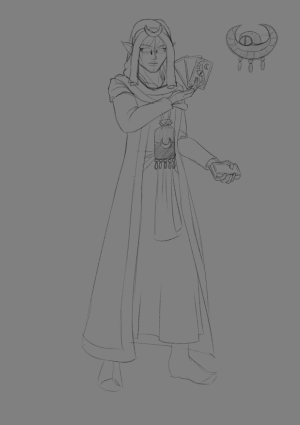Tyler F.M. Edwards's Blog, page 11
July 22, 2022
Song of the Month: Metric, False Dichotomy
This month saw the release of Metric’s latest album, Formentera. To be honest, this is in my view Metric’s weakest album to date. Most of the songs are pretty forgettable.
To be fair, though, this is their eighth album. That this is their first major stumble* is pretty impressive. I can also respect that they’re still experimenting after all this time. Formentera’s sound may not be entirely to my taste, but I can appreciate that it isn’t quite like anything they’ve done before.
*(I thought Synthetica was a bit underwhelming, too, but not to this extent.)
And it still has a few good songs. I like this one.
I enjoy how Emily often sings words as if each syllable was its own word. “False dye cot oh me, no choice to choose…”
July 15, 2022
DMs Guild: Accolades and Achievements
Have a few tidbits of news to bring you from the world of Dungeon Masters Guild.
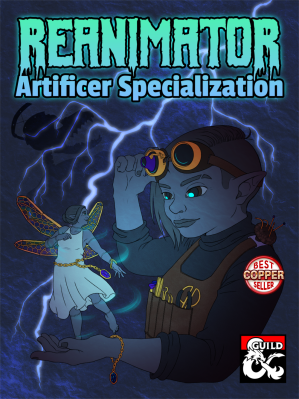 Firstly, my artificer subclass, the Reanimator, has earned its copper best-seller badge. Its the first of my standalone subclasses to do so. Another of my subclasses, the Demonic Bloodline sorcerer, is very close to doing the same, but with how sporadic long tail sales can be, it’s hard to know exactly when it’ll cross that line.
Firstly, my artificer subclass, the Reanimator, has earned its copper best-seller badge. Its the first of my standalone subclasses to do so. Another of my subclasses, the Demonic Bloodline sorcerer, is very close to doing the same, but with how sporadic long tail sales can be, it’s hard to know exactly when it’ll cross that line.
Remember you can always find a list of all my RPG projects, including but not limited to my DMs Guild releases, on the appropriate page.
I’m not the only one receiving some accolades lately, though. My co-writer on the Wyrd Street campaign, Shu Qing Tan, has just been nominated for an ENNIE award in the Best Organized Play category for her adventure Two Hearts Apart. This is the adventure that convinced me to hire her for Wyrd Street, so I’d say the nomination is well-deserved.
To celebrate, Shu is currently offering a limited-time bundle that collects her adventures at a discounted price. And of course, you’ll be able to see her more of her work when Wyrd Street launches later this year.
July 1, 2022
Card Crazy
I think we all went a bit crazy during quarantine. Me, I developed a crippling addiction to co-operative card games.
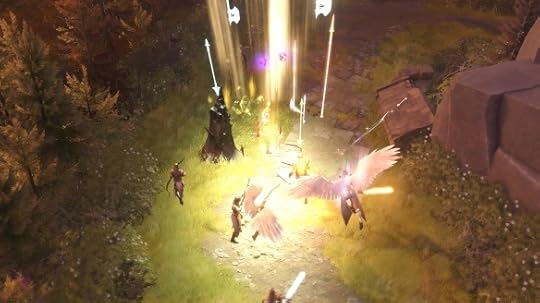 It started with playing Magic: Legends. For all its flaws, I adored the build system in that game, and it made me realize just how much pleasure I get from deck construction, keyword synergy, combos, and other hallmarks of card games like Magic: The Gathering. It goes a long way to explaining my love for the ability wheel of The Secret World, itself inspired by collectible card games.
It started with playing Magic: Legends. For all its flaws, I adored the build system in that game, and it made me realize just how much pleasure I get from deck construction, keyword synergy, combos, and other hallmarks of card games like Magic: The Gathering. It goes a long way to explaining my love for the ability wheel of The Secret World, itself inspired by collectible card games.
Magic is the poster-child for these kind of games, and I dabbled with its digital version, Arena, but I’ve never much enjoyed competitive play. I went so far as to buy a small collection of cheap used Magic cards and homebrew some rules for solo play, and it worked better than you might expect, but it didn’t have a lot of replay value. There’s only so much you can do to fit a square peg into a round hole.
No, I had to find some games that were built for PvE play from the ground up, and while there aren’t that many co-operative card games of this nature, I did find a few.
A few months ago I was singing the praises of Arkham Horror: The Card Game over at Massively Overpowered. Since then, however, I’ve found myself starting to fall out of love with the game.
It’s strange, and I don’t entirely understand why my feelings have changed so much. I think a lot of it boils down to the fact that the game’s story-driven nature leaves it somewhat lacking in replay value.
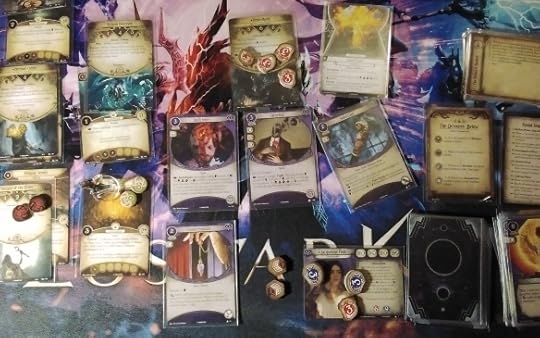 There are other quirks on the game that have begun wearing on me, too. It requires a huge amount of table space (difficult in my tiny apartment), and the set-up time for some scenarios can be downright brutal. You need to clear a good chunk of an afternoon to play this game.
There are other quirks on the game that have begun wearing on me, too. It requires a huge amount of table space (difficult in my tiny apartment), and the set-up time for some scenarios can be downright brutal. You need to clear a good chunk of an afternoon to play this game.
Also, while in theory the deck-building options are vast, in practice they can be quite restrictive. Resource costs, XP costs, class limitations, limited hand slots, limited ally slots, limited arcane slots… Customizing my deck is one of my favourite parts of these games, but Arkham Horror sucks a lot of the fun out of that.
It’s also possible I just picked a bad campaign to start with. My first (and so far only) full cycle was the Innsmouth Conspiracy, and it turned to be a bit of a disappointment. I was expecting a cloak and dagger tale full of intrigue and mystery, but in practice it’s more like a Michael Bay movie. Very much not the tone I expected from this setting.
I have considered trying another cycle before giving up on the game. It’s possible Innsmouth was simply a dud.
Either way, I do have other options for my card game fix.
Around the time I started with Arkham Horror, I also tried Lord of the Rings: The Card Game, which is made by the same company. In contrast to Arkham Horror, it was harder to get into initially, but I’ve since fallen in love with it.
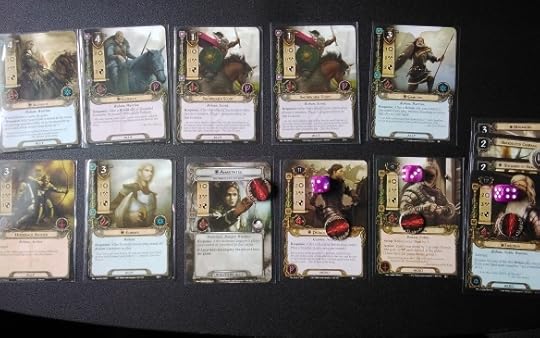 LotR was the first co-op card game made by Fantasy Flight Games, and it has a certain degree of jank as a result. The earlier scenarios are kind of a mess, and it’s brutally difficult across the board. I ended up coming up with some house rules to make the game a little less punishing, as the difficulty doesn’t scale well for solo play (which has thus far been my focus).
LotR was the first co-op card game made by Fantasy Flight Games, and it has a certain degree of jank as a result. The earlier scenarios are kind of a mess, and it’s brutally difficult across the board. I ended up coming up with some house rules to make the game a little less punishing, as the difficulty doesn’t scale well for solo play (which has thus far been my focus).
That said, despite its rough edges, there is a lot of genuine brilliance in this game. Unlike Arkham Horror, there are almost no restrictions on how you can build your deck, and the options for fun builds are nearly limitless.
FFG has a remarkable talent for translating theme into game mechanics, and this is most true in LotR. I am eternally impressed by how different the playstyle of each archetype is, and how well it fits the lore.
For example, Ents enter play exhausted (basically they have summoning sickness from MtG). You know, because they don’t like to be too hasty. But once they’re finally roused, they’re among the strongest allies in the game.
Meanwhile, Silvan Elves feature various powers that trigger when they enter play. To get the best use out of them, you need to find ways to continually move them into and out of play, emulating the hit and run guerilla tactics you’d expect of forest-dwelling Elves.
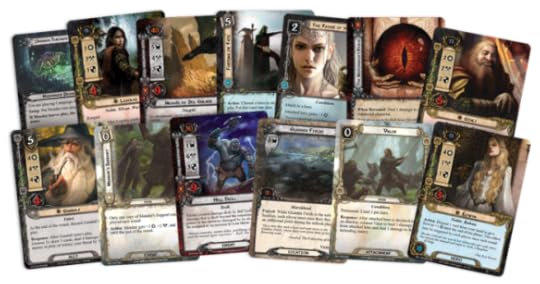 That the designers of this game had a true knowledge of and love for Tolkien’s work shines through every aspect of this game. I keep coming back to one card in particular that showcases this brilliantly: Tale of Tinúviel.
That the designers of this game had a true knowledge of and love for Tolkien’s work shines through every aspect of this game. I keep coming back to one card in particular that showcases this brilliantly: Tale of Tinúviel.
I just love that this card exists. It’s a relatively deep cut of Tolkien lore, and the mechanics of it capture the theme so elegantly. It may not be the strongest combo in the mechanical sense, but the Tolkien nerd in me just squeals with delight every time I play Tale to have Arwen buff Aragorn.
.I’m also impressed by their ability to turn even single lines from the books into fascinating, thematic cards, as seen in Distant Stars or The Long Defeat.
The appreciation for Middle-Earth can also be seen in the game’s story-telling. Initially weak in the early cycles, later cycles feature almost as much story text as Arkham Horror, and while the quality of the writing may not be super strong in the technical sense, it does do an admirable job of telling new tales in Middle-Earth in a way that feels faithful and respectful to the source material.
The more I play this game, the more I appreciate it, and I believe it will continue to be the focus of my card-game obsession moving forward.
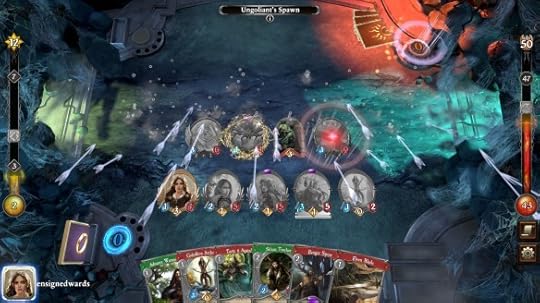 I was even inspired to check out the digital adaptation, “Lord of the Rings: The Adventure Card Game.” As of this writing I’ve only just started on it, but I’m not nearly as impressed with this rendition of the game. It’s more “loosely inspired” by the physical card game than a direct adaptation, and while it plays well enough, it doesn’t have the same cleverness or thematic strength as its forebear.
I was even inspired to check out the digital adaptation, “Lord of the Rings: The Adventure Card Game.” As of this writing I’ve only just started on it, but I’m not nearly as impressed with this rendition of the game. It’s more “loosely inspired” by the physical card game than a direct adaptation, and while it plays well enough, it doesn’t have the same cleverness or thematic strength as its forebear.
FFG does have one more co-op card game that I haven’t played yet, Marvel Champions. I’ve ignored it so far it due to my general disinterest in super heroes, but the two main exceptions to my super-heroic ambivalence are Spider-Man and especially the X-Men… and it just so happens that Marvel Champions’ latest expansion is Spider-Verse focused, and the next begins a major X-Men wave.
That was enough to convince me to buy the core set as an early birthday present to myself, although I haven’t actually picked it up from the store yet. I’ll give the core set a whirl and see if it’s worth investing further.
I’m just not sure it does anything that my current collection of games doesn’t. By all reports Champions shares a lot of DNA with the LotR card game (but with weaker deck-construction options), and I do already have a super-hero game.
Yes, my newfound obsession has led me to one more title, Sentinels of the Multiverse: Definitive Edition.
I played an earlier version of the game at a board game meet-up many years ago and enjoyed it. The thought of buying my own copy of the game was always in the back of my mind, but I didn’t really look into it until I started developing this greater interest in card games. By the time that happened, the Definitive Edition was on the cusp of launching its Kickstarter, so I got in on the ground floor.
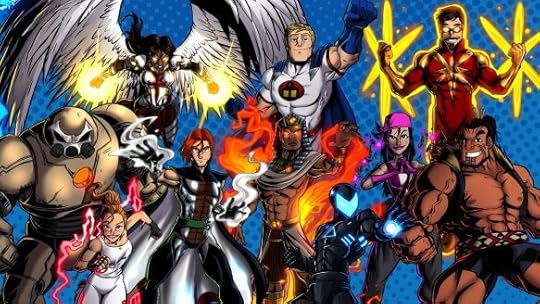 Sentinels is very different from FFG’s card games in many ways. For one, it has no element of deck construction at all. Each hero has a pre-built deck that can’t be altered. Despite that major deficiency, though, I’ve still gotten quite a bit of fun out of it.
Sentinels is very different from FFG’s card games in many ways. For one, it has no element of deck construction at all. Each hero has a pre-built deck that can’t be altered. Despite that major deficiency, though, I’ve still gotten quite a bit of fun out of it.
Sentinels’ strength lies in its relative simplicity. There’s an elegance to its rules that is quite admirable, and it’s a good casual game to play with other people. It can be a welcome break from the complexity and punishing difficulty of LotR and Arkham Horror.
To give you an idea of how big the complexity gap is, most people recommend playing LotR and Arkham Horror “two-handed” (controlling two decks as if you were two players), but I’ve never been able to do this. I find it too mentally taxing.
However, Sentinels requires a minimum of three heroes, so if I want to play it solo, I need to play three-handed… and I still find that less overwhelming than playing LotR or Arkham Horror two-handed.
I don’t think Sentinels will be the sort of game where I feel the need to own everything, but I have already pre-ordered the Definitive Edition’s first expansion, Rook City Renegades. I wanted more variety than the core set offers, and with its focus on darker themes and magical heroes, RCR feels like the perfect expansion for me.
I’ve long been concerned this interest in card games was a passing fancy that I would later regret, but after about a year of this, I’m beginning to think this is a more long-term addition to my list of interests. I can see myself losing interest in specific games (as I said above, Arkham Horror is on the bubble), but I think I’m likely to stick with the hobby as a whole. At the very least, I don’t see myself getting bored with LotR any time soon.
June 24, 2022
Wyrd Street Tease: Bing Li, the Heretic
As we continue toward Wyrd Street’s launch later this year, it’s time to take a look at another of the game’s Iconic Characters. This time, we call upon the dark power of Bing Li, the Heretic.
 Bing Li was an outcast in her homeland of Tiahn. In a nation where no disobedience is allowed, she questioned the imperialistic expansion of the Divine Legion. In a land that venerates the light of the Celestial Powers, she was drawn to the darkness.
Bing Li was an outcast in her homeland of Tiahn. In a nation where no disobedience is allowed, she questioned the imperialistic expansion of the Divine Legion. In a land that venerates the light of the Celestial Powers, she was drawn to the darkness.
When the law caught up with her, she fled Tiahn, and after many hard struggles, she found a home of sorts in Wyrd Street, in the city of Morhold. She became a student of the Bala mystic Ten Obsidian Vulture, and found a life partner in the Plainsfolk Scoundrel Burning Grin.
Even in egalitarian Morhold, those who wield the dark powers Li has mastered are viewed with suspicion, but those who know her know that she is a loyal friend and a tireless crusader against injustice. A Heretic she may be, but that doesn’t mean she can’t also be a hero.
The Fortune Teller was my first attempt at a “dark” magic class for Wyrd Street, but it ended up leaning more into chance manipulation and didn’t entirely fulfill the niche of dark caster. Hence, the Heretic became the game’s true master of the dark arts, inspired by the resurrection cults I’d already written into the lore.
While the flavour of Heretic is all blood magic and necromancy, mechanically they actually play a bit closer to a bard, or a “skill monkey” rogue build. Of all Wyrd Street’s classes, they have the most emphasis on utility and non-combat skills.
As outcasts spent hiding their true nature, Heretics have a natural talent for stealth and infiltration. Rather than relying on skill checks only for such things, they have a variety of magical abilities to let them navigate society and slip through the shadows. Charm of the Lock can be used to open locked doors without a skill check, while abilities like Read the Body and Steer the Heart let them master social encounters by subtly tapping into the biology of people around them.
But just because they’re masters of non-combat skills doesn’t mean Heretics can’t hold their own in a fight. With the power to both generate focus at the cost of health and regain health by defeating enemies, they have some of the best longevity of any class, and their blood magic provides access to a variety of crippling Afflictions.
Drawing from the dark powers of the resurrection cults, the Heretics can enhance the powers of their own bloodline, increasing their core attributes beyond what is possible for other classes, and even gaining a second racial ability.
Like any good necromancer, the Heretic can also call upon unliving minions to do their bidding. Their Blood Dolls are golems of dead flesh constructed to resemble living humans and thus go unnoticed in the busy city streets. Blood Dolls are individually weak, but Heretics can summon an increasingly large number of them as they level up, and if one is slain, it only costs a little focus and an action to replace it. Just as your foes think they’re getting the upper hand, your Blood Dolls will rise again.
Blood Dolls can also be upgraded by several higher level abilities. Plaguebringers buffs their attacks and turns the damage type to poison, while Shadow Puppet grants one of your Dolls a deadly ranged attack.
The emphasis on stealth applies to Blood Dolls as well. The Dress Up Dolls ability allows you to change the appearance of your Dolls, potentially letting them impersonate specific individuals.
Of course, if you’re not a fan of minions, it is still possible to eschew Blood Dolls and focus more strongly on your other abilities.
Finally, Heretics are a class that can benefit strongly from synergy with other party members. Their Exsanguinate ability deals increased damage based on the number of Bleeding stacks on the target, and while Heretics can apply Bleeding themselves, Exsanguinate becomes an even more powerful option if your party members can help you stack the Affliction. Meanwhile their max level ability Possession allows you to take control of a Stunned enemy… but Heretics themselves have no Stun abilities, so you’ll need to coordinate with your allies if you want to choose that ability.
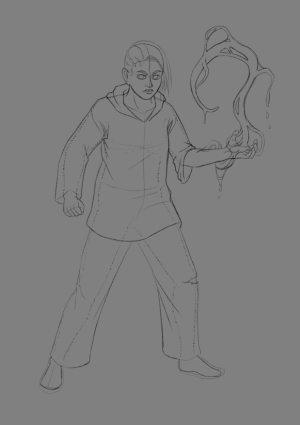 Bing Li will stop at nothing to protect the downtrodden from those who would oppress them, and with the terrifying powers of the Heretic at her disposal, the bullies and tyrants of the world have much to fear.
Bing Li will stop at nothing to protect the downtrodden from those who would oppress them, and with the terrifying powers of the Heretic at her disposal, the bullies and tyrants of the world have much to fear.
June 18, 2022
Song of the Month: Dear Rouge, Gimme Spirit
Dear Rouge is one of those bands I’m always glad to see putting out new stuff. Their music is fun, and while admittedly I don’t know a whole lot about them, they’ve always given me the vibe of being very nice, wholesome people. I think the fact they’re a husband and wife team is cute.
Their latest single, Gimme Spirit, is about returning to their roots, and appropriately, it sounds like something that could have been on their first album. Like most of their stuff, it’s nothing revolutionary, but it’s nice, and it makes you feel good.
May 27, 2022
Wyrd Street Tease: Osiron, the Fortune Teller
Time for another deep dive on one of Wyrd Street’s Iconic Characters, playable in the Quicksilver War campaign releasing later this year.
 Osiron is an odd one. Most of Wyrd Street’s heroes fight for those close to them — friends, family, and lovers — but Osiron has always been a loner. There is no one he is truly close to. His motives are more difficult to define.
Osiron is an odd one. Most of Wyrd Street’s heroes fight for those close to them — friends, family, and lovers — but Osiron has always been a loner. There is no one he is truly close to. His motives are more difficult to define.
Perhaps it is knowledge he seeks. His people, the Xandrians, are a race of scholars, and curiosity drives much of their culture. Yet even among his own kind Osiron is something of a black sheep. The uncertain art of the Fortune Teller has always been a bit taboo among the rational-minded Xandrians.
Perhaps the Xandrians are right to be wary. The Fortune Teller is one of the wildest classes I designed for this game. I threw caution to the wind as a designer so you could throw caution to the wind as a player.
I’ve already given a brief tease of some of the its abilities, and it gives you a bit of an idea of what this class is like. High risk, high reward is running theme. The future can never be entirely predicted, and neither can a Fortune Teller’s toolkit.
One ability completely changes its effect based on what month you’re playing the game in. Another rolls a massive number of damage dice — but those dice only count if they roll odd numbers. One entire tier of abilities can’t be chosen by the player; which ability you get is randomly determined by a dice roll, and it changes with every new adventure you start.
But that doesn’t mean you’re entirely beholden to the whims of fate when you play a Fortune Teller. They have many abilities to reroll dice, guarantee critical strikes, and otherwise twist the odds in their favour.
Most classes in Wyrd Street are designed to be versatile, able to use a variety of weapons and fill multiple roles, depending on your build. Fortune Tellers are an exception to this. They are highly specialized. They deal burst damage at range, and that’s about it. They have some useful buffs and debuffs, and their dice manipulation can benefit allies, but their lack of healing keeps them from occupying a primary support role. No, they’re here to bring the pain.
Of course, the upshot of being highly specialized is that they are damn good at what they do. They have some of the best focus-generation in the game, allowing them to throw out their most powerful abilities with stunning frequency. Most of their damage also ignores enemy armour, making them extremely potent against enemies with high armour but low health.
If you want to play it safe, this might not be your class. But if you want to defy destiny and prove wrong everyone who ever said “it’s too much of a risk,” the Fortune Teller might be the class for you.
My artist is currently working on Osiron’s character art. You’ll have to wait until the game’s full release to see the finished version, but here’s an early concept sketch.
May 20, 2022
Song of the Month: Soccer Mommy, Shotgun
Last month I was so busy with Wyrd Street’s Indie Go Go that I neglected to post a Song of the Month, but we’re back now with my latest musical discovery. This is still me we’re talking about, so I’ve picked another melancholy tune, Shotgun by American singer-songwriter “Soccer Mommy.”
This song is my first time ever hearing her music, but based on this, I might have to see what else is in her catalogue. Solid stuff.
May 13, 2022
The Inexplicable, Irredeemable Disaster of Picard’s Second Season
I debated whether or not I should even write this post. Partly because I try not to be too negative in what I write (I know it doesn’t always seem that way), and partly because fully covering everything that went wrong with the second season of Star Trek: Picard would pretty much be a full-time job. I genuinely feel you could devote an entire podcast to breaking down why every single scene of this season failed, either in isolation or in the greater context of the story.
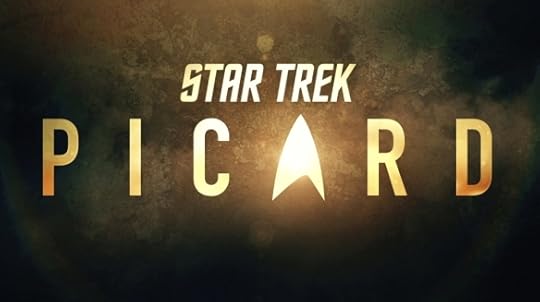 It’s awful. Utterly, irredeemably, inexplicably awful. It is almost certainly the worst season of any Star Trek show, and very possibly the worst season of any TV series I have willingly sat through.
It’s awful. Utterly, irredeemably, inexplicably awful. It is almost certainly the worst season of any Star Trek show, and very possibly the worst season of any TV series I have willingly sat through.
Nothing about this season makes sense, on any level. And I don’t just mean in the sense of continuity errors or plot holes, although there is an astronomical number of those. None of it even makes sense emotionally, or from a story-telling perspective. It’s an endless series of massive blunders that were not only avoidable, but which the writing team went out of their way to create.
How bad is it? Going in, I had low expectations, especially given the severe flaws of the first season, but the one thing I was sure of was that there was no way they could screw up the reunion of John de Lancie and Patrick Stewart. Two actors that are brilliant individually, and who have massive on-screen chemistry. An entire season of them playing off each other couldn’t possibly be all bad.
But baffingly, that’s not what we got. In the entire season, Picard and Q have about three scenes together, totaling what felt like at most five minutes of footage. In a ten episode season.
This was the easiest of easy wins, and they still managed to find a way to squander it. It’s like if I offered someone a million dollars to tell me what 2 + 2 is, and they refused because they wanted to pursue their dream of selling used vacuum cleaners to uncontacted Amazon tribes.
 Everything in this season is like that. Baffling, unforced errors that serve no purpose.
Everything in this season is like that. Baffling, unforced errors that serve no purpose.
One of the greatest mistakes of Picard’s first season was under-utilizing Isa Briones, and she appears in only a handful of scenes in this season — not even playing the same character! Instead she plays a new character with no relevance to the plot, no interactions with the rest of the cast, and no reason to exist in the story whatsoever.
Nothing was stopping them from just including Soji in the season. Literally nothing. Like all of season two’s innumerable blunders, it was easily avoidable, but the writers dove headlong into it with reckless abandon.
Similarly, the Romulan warrior monk Elnor was one of the best parts of the first season, but he is quickly killed off at the beginning of season two. Even more baffingly, Picard — the character who actually has a history with Elnor — has no apparent reaction to his death, whereas Raffi — who has had just one scene with him up prior to this season — suffers a complete emotional meltdown over his loss.
I get that they are meant to have developed a friendship off-camera during the break between seasons, but we don’t really see any of it. “Show, don’t tell” is one of the most basic tenets of good writing — it’s one of the very first things you learn when you begin studying any kind of fiction writing — and it’s completely ignored here. To call it amateurish is unfair to amateurs.
There’s also Talinn, a human woman from hundreds of years in the past who mysteriously looks just like Picard’s Romulan maid, Laris. This great mystery is strung out for multiple episodes, only for us to eventually learn… she actually is a Romulan, presumably related to Laris. The most boring explanation possible, and there was no reason it couldn’t have been revealed off the bat. Just cheap drama for cheap drama’s sake.
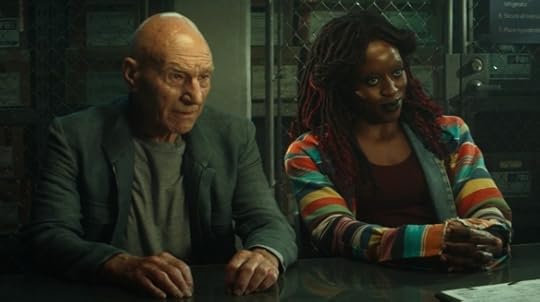 Or we could look to the fact that the writers just straight up forgot the circumstances of Picard and Guinan’s first meeting and ended up effectively ret-conning it out of existence.
Or we could look to the fact that the writers just straight up forgot the circumstances of Picard and Guinan’s first meeting and ended up effectively ret-conning it out of existence.
All of this barely even begins to scratch the surface of this unpardonable disaster of a season, but I have not the will to keep going. The above issues at least stand out as most emblematic of the sloppy, nonsensical attempts at story-telling that defined the season.
Picard’s first season had a lot of flaws, but it set us up with all the ingredients for a fantastic show. Aside from the obvious talents of Patrick Stewart, we also got a great cast of compelling new characters, countless opportunities for powerful stories around the Romulan diaspora and the rehabilitation of the X-Bs, and a terrifying new threat in the form of extra-dimensional machine gods.
The second season threw all of that out the window in favour of a story that not only fails to achieve even the most basic tenets of good story-telling, but which appears to have done everything possible to avoid even brushing up against them.
I genuinely feel bad for Patrick Stewart and the rest of the cast. If the writers had tried to make the worst season possible, they could not have done any better.
April 28, 2022
That’s a Wrap
The crowdfunding campaign for Wyrd Street has now concluded, and while we didn’t get the amount we were hoping for, we press on toward launch. Once again, my sincere thanks to everyone who has supported us.
 Right now, I’m sending out instructions for the next round of art, working on finishing the GM’s guide, and beginning to plan out the remainder of the campaign. I’ve had several flashes of inspiration for how to include a lot of the cool stuff I originally planned for the now-scrapped act two. I think it’s going to be a real fun ride.
Right now, I’m sending out instructions for the next round of art, working on finishing the GM’s guide, and beginning to plan out the remainder of the campaign. I’ve had several flashes of inspiration for how to include a lot of the cool stuff I originally planned for the now-scrapped act two. I think it’s going to be a real fun ride.
I’m going to continue doing updates on Indie Go Go and teasers here on Superior Realities as we move towards the launch of the game, but the cadence will slow. I need to focus my time on actually finishing the game.
See you on Wyrd Street.
April 22, 2022
Wyrd Street Tease: Na Wen, the Brawler
Time for another deep-dive on one of Wyrd Street’s Iconic Characters. Today, we’ll be taking a perhaps overdue look at the final (playable) member of the family at the heart of the story, Na Wen.
 Once a decurion in the Divine Legion of Tiahn, Na Wen retired from her life as a soldier and moved to a Holder border town to start a family with her husband, Karl Vinnarsson. They had two children, Lo and Ji, who are now young adults, but recent years have brought grave struggles to the family.
Once a decurion in the Divine Legion of Tiahn, Na Wen retired from her life as a soldier and moved to a Holder border town to start a family with her husband, Karl Vinnarsson. They had two children, Lo and Ji, who are now young adults, but recent years have brought grave struggles to the family.
First, Karl got sick, leaving Wen and the children to support the family. Then came the war. Na Wen now finds herself a refugee, hunted by the same nation she once served. She knows one thing for certain, though: No harm will come to her family while she draws breath.
Wen’s youth may be behind her, but she is still a formidable warrior, and this is reflected by her class, the Brawler. Wyrd Street’s answer to classes like warrior, fighter, or barbarian, Brawler is all about getting into the thick of the fight and staying there.
With the highest base health pool in the game, access to all forms of armour, and a wealth of defensive abilities, Brawlers are natural tanks. Alternatively, they can be built to deliver ruinous melee blows, but they are so naturally resilient that even a damage-specialized Brawler need never worry about becoming a glass cannon.
Following up on my recent discussion of the focus mechanic, Brawlers are the most focus-starved class in Wyrd Street, with a small maximum pool and little regeneration, but they compensate for this with their incredible raw stats and powerful passive abilities. They are a class that need not rely on clever tricks: They are the embodiment of raw, direct power.
For example, Brawlers have many options to improve their basic attacks by specializing in specific weapon types. Most classes have access to Combat Arts, level one abilities that often steer a character toward a certain weapon type, but only Brawlers gain access to Improved Combat Arts, which further enhances them. The Dual Wield Expert Combat Art allows you to add the damage die of an offhand weapon to basic attacks, but its improved version allows you to add the offhand damage to abilities, as well.
If you want a more active playstyle, Brawlers do have an option for that, as well. The Pugilist Combat Art is one of what I informally call “soft subclasses,” build-defining abilities that can be modified or upgraded as you level to shake up a class’s playstyle.
As a Pugilist, you lose the option to wear heavy armour, but gain access to combos, a variety of useful effects that are triggered by using two actions on a turn to perform unarmed or fist weapon attacks.
Pugilist gives you tactical choices to make every turn even without spending focus, and it can help with focus-starvation a bit too, as one of the combos can be used to restore focus.
(As an aside, Vigilante also has access to Pugilist, but their upgrade path for it is different, leading to varied takes on the same archetype.)
If you want to play the traditional, simple warrior archetype, Brawler is the class for you. But if you want something more complex, Brawler is also for you, thanks to options like Pugilist.
There’s a bit less than a week left in Wyrd Street’s Indie Go Go campaign, and there’s still time to contribute. I’ve recently put up an update covering how we’ll be adjusting our plans given that it doesn’t look like we’ll be meeting our funding goal. The big news is that anyone who backs at the Fall of Morhold tier will now be getting the full campaign at no additional charge — that’s about twice as much adventure content for the same price.

